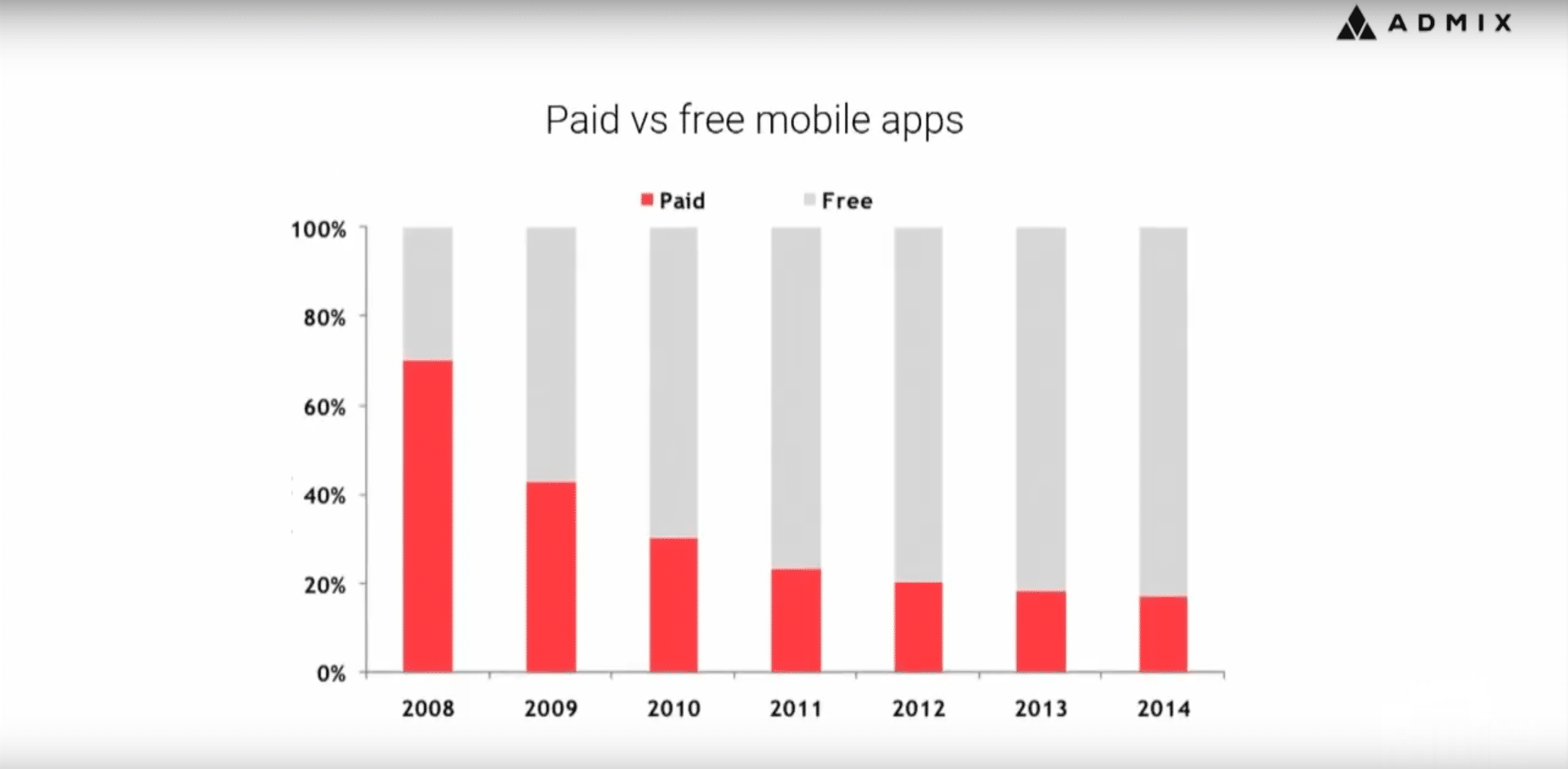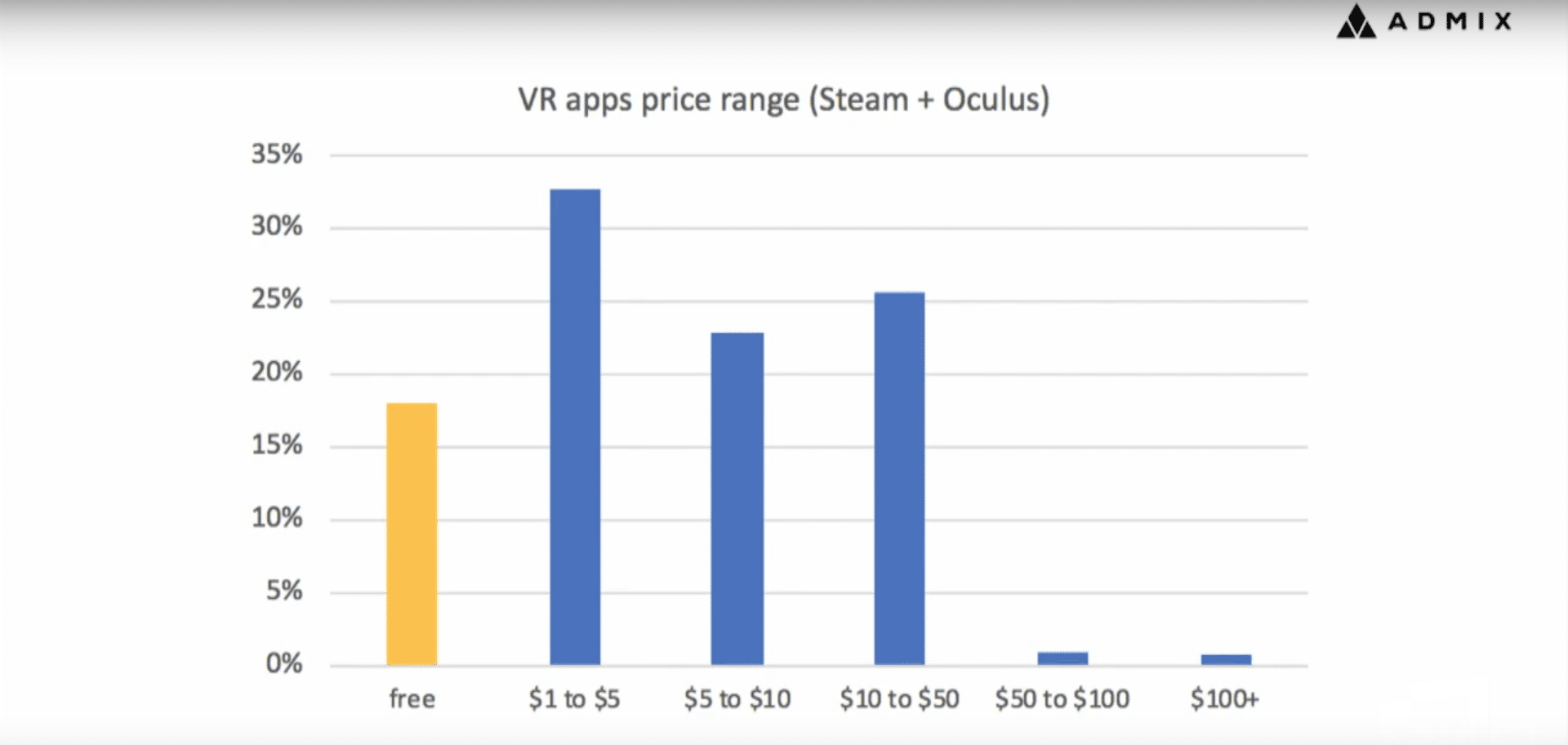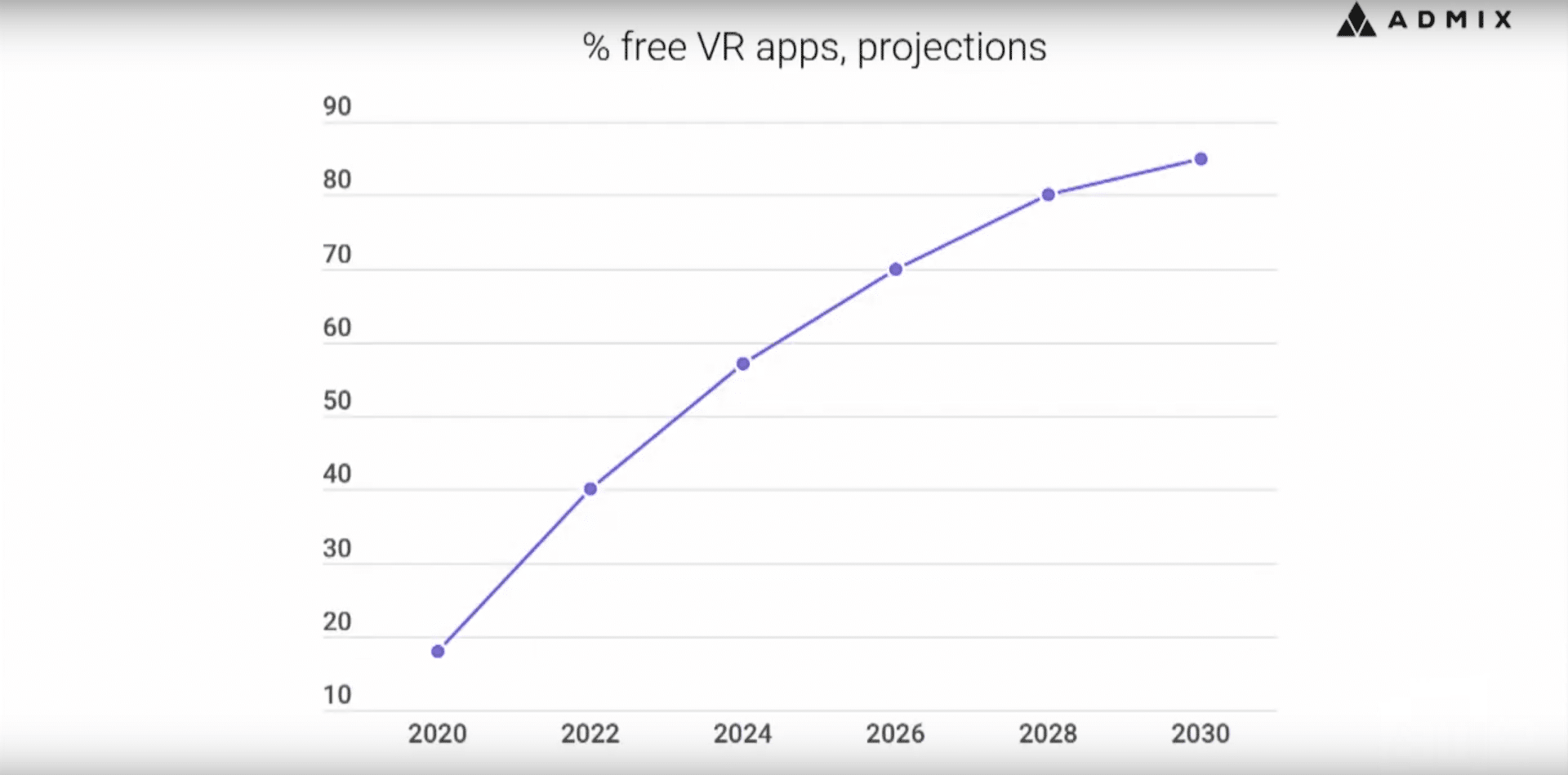
XR Talks is a series that features the best presentations and educational videos from the XR universe. It includes embedded video, as well as narrative analysis and top takeaways. Speakers’ opinions are their own. For a deeper indexed and searchable archive, subscribe to ARtillery PRO.
The potential for advertising in VR is a bit of a double-edged sword (or lightsaber). Levels of immersion are unmatched by most other ad mediums, which engenders higher-quality impressions, awareness, brand recall and the rest of the typical KPIs for display advertising.
But VR ad marketplaces are lacking today, as brand advertisers are famously reach driven. VR’s consumer penetration is far from where it needs to be to get Madison Avenue excited en masse. For example, VR’s 12.8 million installed base is .3 percent of global smartphones in-market.
But there are still arguments for VR advertising’s potential. We’re talking things like billboards placed within consumer VR experiences such as games or social apps. Admix CEO Samuel Huber in fact reported at AWE EU that the company has reached a billion VR ad impressions.
“[VR ads] aren’t intrusive,” he said on stage. “This is the kind of experience that I think we need to bring to XR because intrusion won’t be tolerated. So this is a first step to go to brands and say ‘there are these new environments full of millennials, full of generation Z, who are spending over an hour-per-day interacting, [whom] you can’t reach elsewhere. Why don’t we use some of your existing creatives and ads and place them in these environments.’ […] In less than a year, we are reaching close to a billion ad impressions per month.”

Beyond glowing words about VR ads from a vested interest, Huber makes a strong case using historical and economic evidence. In short, VR shows similar patterns to other media that became supported by advertising revenue models as they matured. That includes mobile media and apps.
“The number of paid apps was over 75 percent in the first year of the app store which is kind of right where I would rank VR today. And then it went all the way down to about 15 percent in 2014, and is closer to under 10 percent now. […] As more people entered this market, they were not willing to pay upfront so the developers had to adapt to find new business models and they found that when you made your app free, you get about 50 percent more downloads. You can try to monetize these users later on on the back end.”

This progression happens because emerging stages of any given tech involve early adopters who are more willing to pay for content and experiences. But as that technology or media matures, its transition to mainstream audiences requires different busines models with less user commitment.
Huber’s main point is that VR could follow that same path. Using the construct and historical pattern above, VR is now in early adopter stages where most content is paid. The paid model simply follows demand signals because those early adopters are willing to pay.
“Today, there are only about 18 percent of applications in VR stores such as Steam and Oculus which are free. The rest range from between $1 and $5, and it goes up to $100. So the vast majority of apps today are not free. This is fine for now because we are still very early in the market and most of these users are early adopters. They are willing to pay for content, just like they were willing to pay for prototype unproven hardware and generally, they have higher purchasing power than the average person.”

But could this change as VR reaches broader audience segments? Huber theorizes that those users won’t be as willing to pay for premium content. So just like it happened in mobile, business models will have to adapt to free downloads, which means advertising or in-app purchases.
Everyone in this room hopes and knows that VR and AR are going to be massive-scale media. It’s really going to be the next computing platform. So to reach that level, we need to target and reach people that are not only early adopters but everyone.[…] What that means is that most of the content will have to be cheaper if not free […] Not everyone is willing to pay $19.99 or $39.99 for a piece of content.
Quantifying that assertion, Huber turns again to historical patterns in mobile monetization and other signals. The result is his projection that free VR apps will grow from just under 20 percent today to more than 80 percent in the next decade. Keep in mind this is an estimate.

As for the remaining apps, there’s still room for premium content. Just like there’s still a market for mobile apps where levels of specialty or niche interest command premium prices, VR will have paid apps. This will mostly happen in gaming — just like we see in console gaming today.
“There will always be a place for premium, and gaming will be a great example of that […] and there could be various [models] coexisting. There could be subscription, there could be-in-app purchases and of course, there will be advertising […] Advertising still today remains the best way to monetize the long tail of the users who do not want to engage with subscription or with in-app purchases.”
The benefit to users and VR creators will be choice, says Huber. Just as the mobile revolution sprouted new ways for app creators to monetize beyond premium/paid apps, VR creators will benefit in similar ways. But it will be a slow progression as the audience grows.
“We are building the infrastructure necessary for creators to be able to change business models, to be able to say ‘I’m not going to charge $19.99. I’m going to charge less or nothing and I’m going to try to make money in a different way.’ Now of course, it depends on the audience. You need an audience to monetize with advertising. This is not a trend that’s going to play out in the next few months. It’s a global trend that is going to play out in the next decade.”
See the full talk below.
For deeper XR data and intelligence, join ARtillery PRO and subscribe to the free AR Insider Weekly newsletter.
Disclosure: AR Insider has no financial stake in the companies mentioned in this post, nor received payment for its production. Disclosure and ethics policy can be seen here.
Header image credit: YouTube
